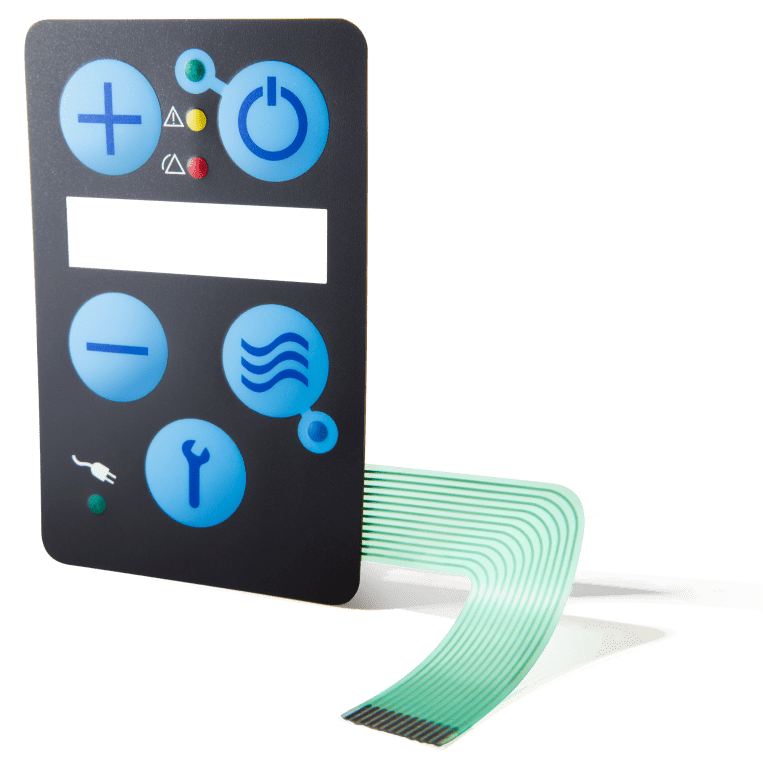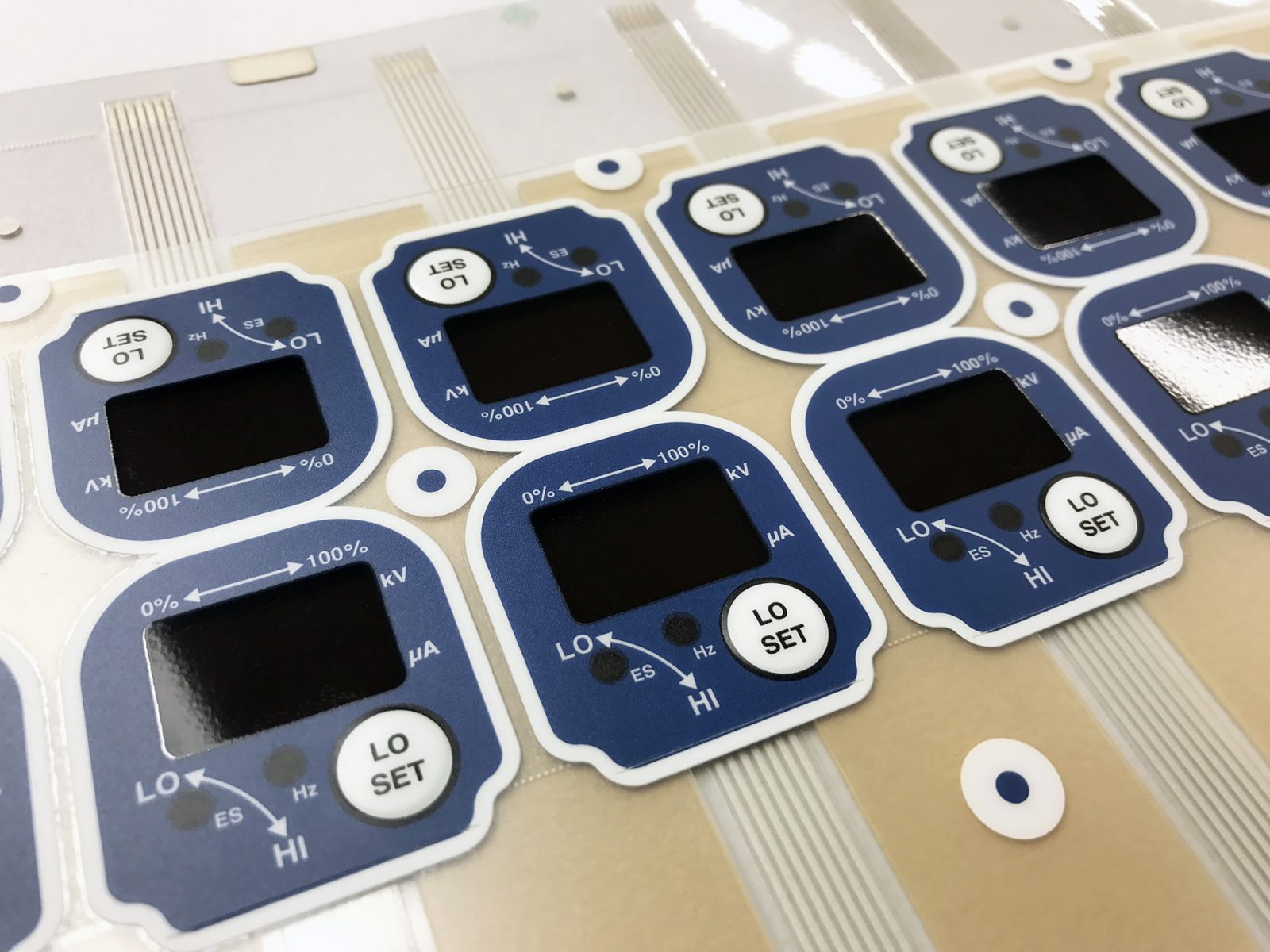The Importance of Membrane Switches in Creating Easy-to-Use Interfaces
Why Membrane Layer Switches Are Necessary for Resilient Control Equipment
Membrane layer switches play an essential role in making sure the toughness and integrity of control systems across various markets. Their distinct building allows them to endure tough ecological factors such as humidity, temperature level extremes, and physical wear. This durability not only extends the life expectancy of the systems they serve but also reduces upkeep requirements. As we explore the complex advantages of membrane switches, it ends up being evident that their significance goes beyond mere performance, affecting user experience and operational performance. What further effects do these characteristics hold for the future of control system layout?
Introduction of Membrane Layer Switches
Membrane buttons are flexible and trusted components generally made use of in various digital control systems. The visuals overlay gives both practical and aesthetic layout, while the spacer layer ensures that the switches are turned on just when pressed.
Membrane buttons are commonly preferred in applications requiring a small and light-weight layout, making them excellent for handheld devices, clinical devices, and industrial equipment. They can be customized to fulfill particular user needs and can integrate different features such as backlighting, responsive responses, and multiple colors. Membrane layer switches are resistant to dirt, wetness, and impurities, making them ideal for settings where sturdiness is crucial.
Advantages of Resilience
In several applications, the resilience of membrane layer switches deals considerable benefits that boost their overall performance and dependability. These buttons are made to stand up to severe atmospheres, making them ideal for usage popular conditions such as high moisture, extreme temperatures, and direct exposure to chemicals. Their robust construction assists to avoid damages from physical effect, making sure resilient capability and minimizing the demand for regular replacements.
In addition, membrane layer buttons are resistant to use and tear, which is crucial in applications where frequent communication occurs. This longevity equates to decrease upkeep costs, as organizations take advantage of minimized downtime and fewer service interruptions. The encapsulated layout of membrane switches safeguards internal components from dust and moisture ingress, additional contributing to their life-span (membrane switch).
Another advantage is their capability to preserve regular efficiency in time. With a high resistance for mechanical tension, these switches protect their tactile responses and electric integrity, ensuring customer satisfaction. Ultimately, the resilience of membrane changes not only boosts operational effectiveness however additionally fosters confidence in their dependability, making them a recommended option for control systems across various industries.
Applications in Different Industries
Long lasting control systems utilizing membrane layer switches find extensive applications throughout a series of markets, each benefiting from the unique attributes these buttons provide. In the clinical sector, membrane layer switches are vital for tools such as person displays and diagnostic tools, where reliability and ease of cleansing are paramount. Their resistance to wetness and impurities ensures they keep performance in sterilized environments.
The vehicle industry leverages membrane layer buttons for control panel controls and infotainment systems, where they offer streamlined, low-profile user interfaces that enhance customer experience. These buttons are likewise made to withstand harsh conditions, including additional hints exposure to extreme temperatures and vibrations.
In industrial settings, membrane switches are generally used in machinery control panels, using tactile comments and sturdiness needed for high-usage applications. Their capability to stand up to chemicals makes them ideal for producing atmospheres where spills and contaminants are regular.

Consumer electronic devices, such as kitchen area appliances and remotes, also use membrane switches for their versatility and cost-effectiveness. On the whole, the versatility and robust nature of membrane switches over make them vital across different sectors, guaranteeing efficient operation and durability in control systems.
Style and Aesthetic Charm
While capability is critical, the layout and aesthetic allure of control systems equipped with membrane buttons play a vital role in individual interaction and overall experience (membrane switch). The aesthetic style of these buttons can significantly influence user assumption and interaction. A well-designed membrane layer button boosts the attractiveness of the tool, making it a lot more attractive to users and promoting a connection in between the user and the item
Membrane layer switches over use a good deal of versatility in design, permitting manufacturers to tailor graphics, colors, and textures to align with brand identification and item visual appeals. The use of lively shades and unique patterns can attract focus, while responsive responses can strengthen the user's interaction with the device. Additionally, the ability to incorporate LED signs and backlighting right into the membrane switch style offers both practical and aesthetic advantages, improving visibility and use in numerous atmospheres.

Enhancing Individual Experience

Moreover, membrane layer buttons can be personalized to incorporate graphical user interfaces, boosting use by offering details in a clear and intuitive manner (membrane switch). This modification can include symbols, tags, and shade coding that overview users with complex performances easily. Additionally, their convenience enables for assimilation in different atmospheres, making certain consistent efficiency whether in industrial machinery or consumer electronic devices
The resilience of membrane layer switches additionally plays a vital function in individual experience. By enduring severe problems and extended usage, these buttons decrease the possibility of system failures, hence advertising reliability and user self-confidence. Ultimately, the tactical use membrane layer switches not just boosts functionality yet additionally here are the findings substantially enriches user communication with control systems, making them a vital component in modern design.
Final Thought
